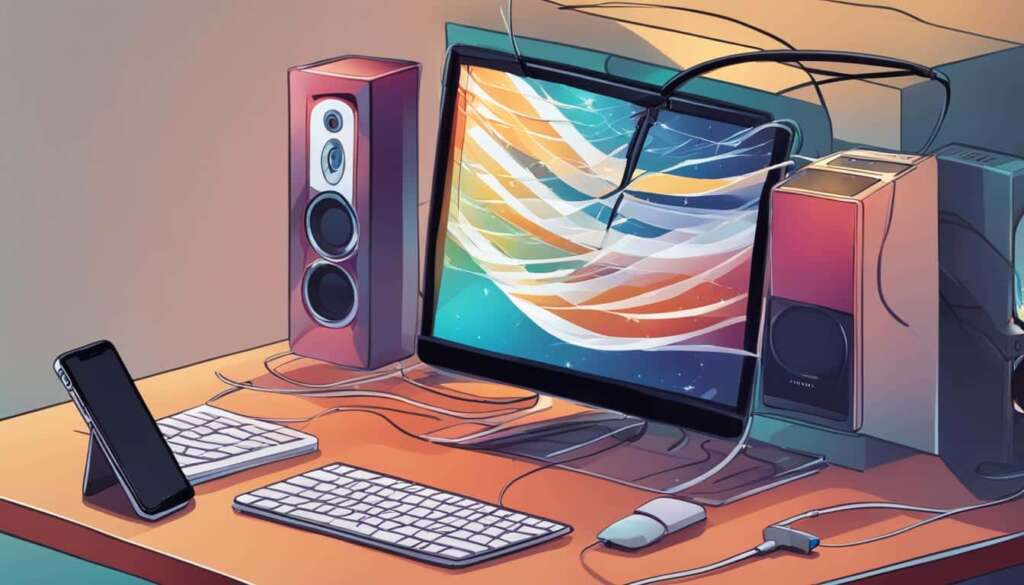Table of Contents
When backing up your iPhone on a PC, it’s essential to know where the backups are stored. Multiple sources provide instructions on how to locate the backup files on a PC running Windows 10.
The default location for iPhone backups on Windows 10 is in the directory path “C:\Users\[your username]\AppData\Roaming\Apple Computer\MobileSync\Backup”. The Backup folder contains subdirectories named by each device’s unique identifier (UDID), where the backups are stored.
Additionally, iTunes provides a way to check the location of backups within the application itself, under the “Devices” tab in the “Preferences” menu. It’s important to note that if you have changed the default settings for your iTunes backup files, the backups may be stored in a different location.
Steps to Locate iPhone Backups on Windows 10
When it comes to locating iPhone backups on a PC running Windows 10, following a step-by-step guide can make the process much easier. Here are the detailed steps:
- Step 1: Open the File Explorer on your Windows 10 PC. You can do this by pressing the “Windows key + E” or by clicking on the File Explorer icon on your taskbar.
- Step 2: In the File Explorer, navigate to the following directory path:
C:\Users\[your username]\AppData\Roaming\Apple Computer\MobileSync\Backup. Replace “[your username]” with your actual Windows username. - Step 3: In the “Backup” folder, you will find subdirectories named with your iPhone’s unique identifier (UDID). These subdirectories contain the actual backup files.
- Step 4: Alternatively, you can also check the location of your backups within iTunes itself. Open iTunes on your Windows 10 PC, go to the “Edit” menu, and click on “Preferences”.
- Step 5: In the Preferences window, click on the “Devices” tab. Here, you will see a list of your iPhone backups along with their storage locations.
By following these steps, you will be able to easily locate your iPhone backups on a PC running Windows 10. This information can be helpful if you ever need to restore your iPhone from a backup or transfer your backups to another location for extra security.
Comparison of iPhone Backup Locations on PC
| Backup Location | Advantages | Disadvantages |
|---|---|---|
| “C:\Users\[your username]\AppData\Roaming\Apple Computer\MobileSync\Backup” |
|
|
| Custom Location (using symbolic link) |
|
|
Changing the iTunes Backup Location on Windows
If you want to change the location where iTunes stores your backups on a Windows PC, you can use a symbolic link to redirect the backup files. Here’s how to do it:
- First, you’ll need to locate the current iTunes backup folder. By default, it is located in the path C:\Users\[your username]\AppData\Roaming\Apple Computer\MobileSync\Backup. Take note of this location.
- Create a new folder in the desired location where you want to store your iTunes backups. For example, you might want to create a folder called “iTunes Backups” on your D: drive.
- Next, open the Command Prompt by pressing the Windows key + R, and then type “cmd” and press Enter.
- In the Command Prompt window, type the following command:
mklink /J "C:\Users\[your username]\AppData\Roaming\Apple Computer\MobileSync\Backup" "D:\iTunes Backups"(Replace “D:\iTunes Backups” with the path to the new folder you created in step 2). - Press Enter to create the symbolic link. You should see a message indicating that the junction was created successfully.
- Close the Command Prompt.
That’s it! You have successfully changed the iTunes backup location on your Windows PC. Now, iTunes will store your backups in the new folder you specified. Remember, whenever you want to access or restore your backups, you’ll need to navigate to the new location.
Pro Tip: Changing the iTunes backup location can be helpful if you have limited storage space on your C: drive or if you want to keep your backups organized in a specific folder.
Backing up iPhone with MobileTrans
If you’re looking for a reliable alternative to iTunes for backing up your iPhone to a PC, MobileTrans is an excellent choice. With its user-friendly interface and powerful features, MobileTrans makes the backup process quick and effortless.
To get started, follow this step-by-step guide:
- Step 1: Download and install MobileTrans on your PC from the official website.
- Step 2: Launch MobileTrans and connect your iPhone to the PC using a USB cable.
- Step 3: Once your iPhone is detected, click on the “Backup” option in MobileTrans.
- Step 4: Select the data you want to back up, such as contacts, messages, photos, and more.
- Step 5: Choose the destination path on your PC where you want to save the backup files.
- Step 6: Click on the “Start” button to begin the backup process.
- Step 7: Wait for MobileTrans to complete the backup. Once finished, you can access the backup files on your PC whenever you need them.
With MobileTrans, backing up your iPhone has never been easier. Say goodbye to the complexities of iTunes and enjoy the convenience and efficiency of this powerful backup tool. Give MobileTrans a try and experience seamless iPhone backups on your PC.
FAQ
Where are iPhone backups stored on a PC running Windows 10?
The default location for iPhone backups on Windows 10 is in the directory path “C:\Users\[your username]\AppData\Roaming\Apple Computer\MobileSync\Backup”. The Backup folder contains subdirectories named by each device’s unique identifier (UDID), where the backups are stored.
How can I check the location of iPhone backups within iTunes on a Windows PC?
To check the location of backups within iTunes on a Windows PC, go to the “Devices” tab in the “Preferences” menu of iTunes. There, you can find the location of your iPhone backups.
What if I have changed the default settings for my iTunes backup files?
If you have changed the default settings for your iTunes backup files, the backups may be stored in a different location. It’s important to make note of the changes you have made to ensure you can locate your iPhone backups.
Can I change the location where iTunes stores my backups on a Windows PC?
Yes, you can change the location where iTunes stores your backups on a Windows PC. You can use a symbolic link to redirect the backup files to a different location. Here’s how to do it:
Is there an alternative to iTunes for backing up my iPhone to a PC?
Yes, MobileTrans is a reliable alternative to iTunes for backing up your iPhone to a PC. Here are the steps to back up your iOS device using MobileTrans:







